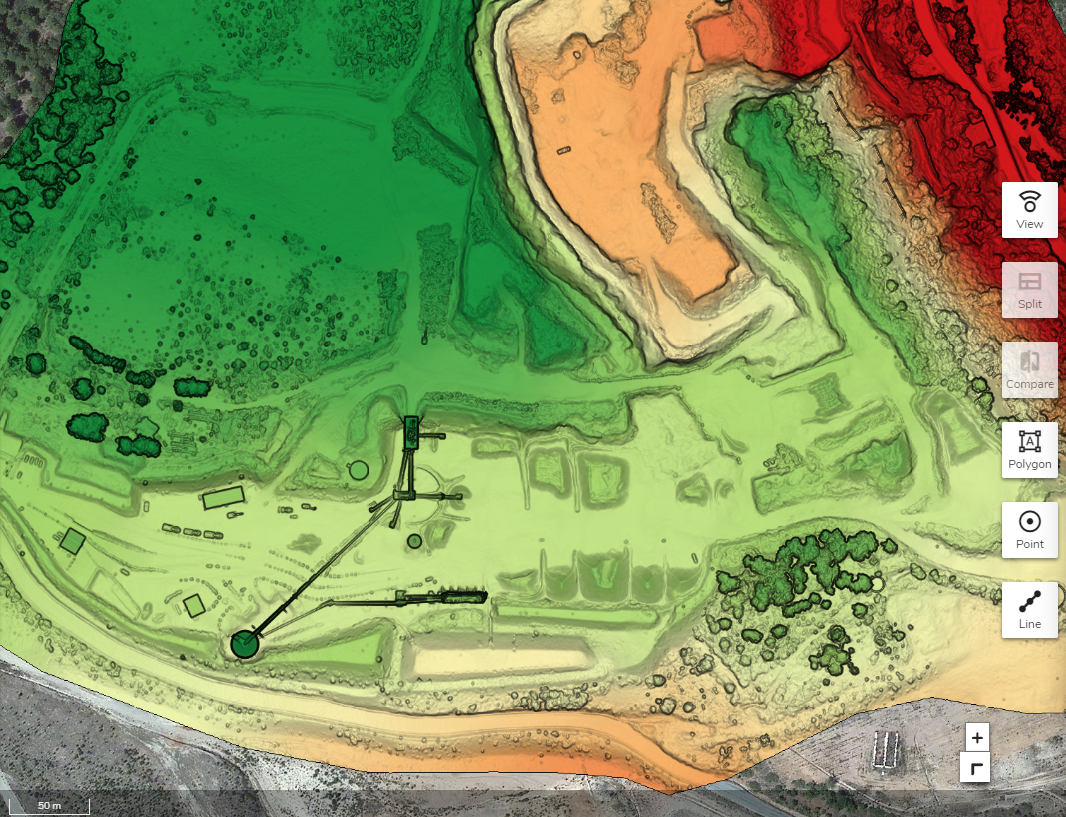

Typically the TIN interpolation method works best for creating digital topography from irregularly spaced known elevation points, like points extracted from contour lines. If the elevation points were spaced in a regular gridded fashion, the elevation values could automatically be converted into a raster DEM. The known elevation points are concentrated along the trace of the contour lines, leaving large gaps of unknown elevation points between contour lines. Before creating the interpolation, digitized contour lines must be converted to points. The new elevation points are combined with known elevation points to create a continuous plane representing the Earth's surface. Interpolation is a method used to create new elevation points using information from a discrete set of known elevation points. SRTM data for the Ghandruk topographic map region contain 9,713 km 2 of data void area (Figure 1). The Ghandruk topographic map is the topographic map that contains the Macchapucchare summit. The distinctive "fish tail" or double peak topography of Macchapucchare's summit make it an ideal location to study the differences between the TIN and DEM interpolation methods (Figure 2). Macchapucchare, or the "fish tail" summit, is a mountain peak in the Annapurna Range of central Nepal. Digital topography can be created by extracting elevation points from digitized contour lines to interpolate the shape of the surface between the elevation points. One way to resolve this data void problem is to digitize contour lines from topographic maps and use the elevation data from the contour lines to create a TIN or DEM. This absence of SRTM data makes models of mountain summits in the Himalaya difficult to visualize. For example, SRTM data surrounding the mountain peaks in the central Nepalese Himalaya contain approximately 4,200,000 km 2 of data voids (Figure 1). Unfortunately, glaciated and extremely steep topography reflected radar beams away from the shuttle receiver during the data collection process, creating data voids in some mountainous terrains. The SRTM project yielded publically available, high resolution DEMs at 1 arc-second (~30 m) resolution in the United States and 3 arc-second (~90 m) worldwide. In 2000, the shuttle radar topography mission (SRTM) collected rasterized elevation data across 80% of the globe, generating a DEM covering the Earth's surface from 60°N to 60°S latitude. The collection methods for the data researchers want to compare to digital topography and the importance of boundaries plays a significant role in the decision to represent topography as a TIN or DEM.Ī case study from the Annapurna Range of Central Nepal More qualitative cultural data, such as population, employment, election results, etc are usually collected by state or county agencies and are visualized in vector format.

Examples of satellite derived gridded data are precipitation data, landcover, or vegetation type. Often, digital data acquired from satellites are collected in a gridded fashion. The DEM type decision depends on the analysis of interestĭigital vector topography can clearly define boundaries, such as valley floors or ridge lines. Choosing to represent digital topography in either vector or raster (TIN or DEM) format depends on the type of GIS analysis a user wants to perform.

Raster format divides the topographic surface into equally spaced intervals or a gridded array and then displays the elevation value for each grid cell (called a digital elevation model or DEM).
#Digital terrain model vs digital elevation model series#
Vector format uses a series of irregularly spaced elevation points connected by lines into a triangulated irregular network (TIN). Digital topography can be represented in either vector or raster format. The recent explosion of Geographic Information System (GIS) tools enable geoscientists to visualize the Earth's surface in three dimensions using digital topography.


 0 kommentar(er)
0 kommentar(er)
